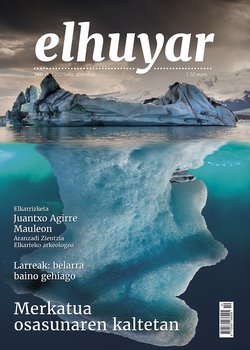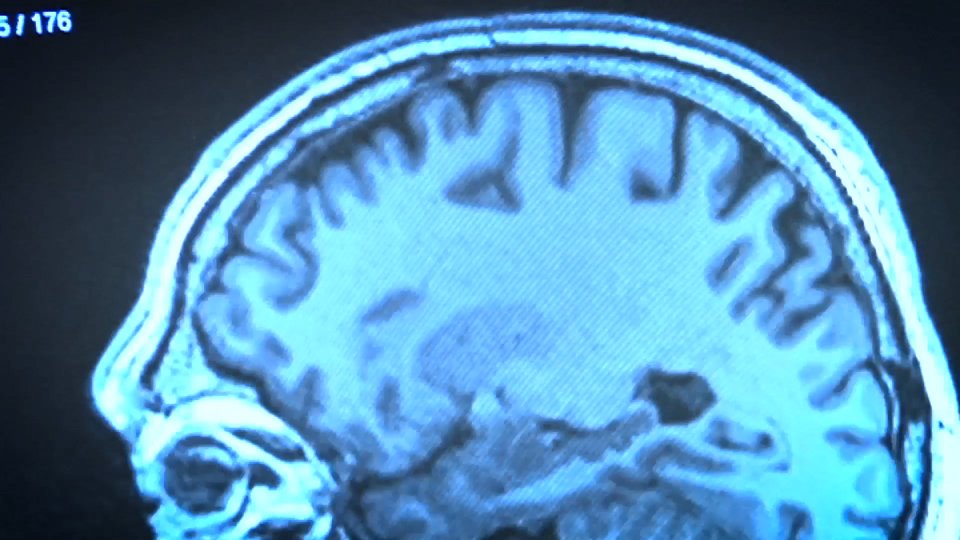Nanoscale memory devices
In the next few minutes, we will go to the Nanogune research center in San Sebastián. Every day, new information storage needs are emerging. On our mobile phones, for example, we receive videos, photos and songs, not to mention the USB memories that we carry in our pocket. We get more and more information and more information. In order to respond to these needs, in Nanogune, research is carried out on the path of smallness to create new memory devices: nanoguers or nanotresnas with a large memory.
In plain sight, it's impossible to see them, but wait, there they are. We are talking about nanoscale memory devices, which, being said to be very small, may not be understood, but we can come to understand them knowing that there are a million nanometers one after the other in a single millimeter. They're making samples in that white room. The use of an aseptic and clean place has a reason. A ray of dust or a grain of pollen is a thousand times bigger than the devices that are being produced.
Luis Hueso, CICnanoGUNE: The size of one of these devices can be 10X10 nanometers wide, and in each nanometer, what will there be, three atoms? So we're talking about a very small amount of atoms. This is the playing field of nanotechnology; it must push these devices to the limit, to the point where they are almost without atoms.
That's what they're trying to do here in Nanogune. One of the lines of research is now to design and build new information storage devices that are as small as possible, as fast and efficient as possible.
Luis Hueso, CICnanoGUNE: Anyone now has an 8-megapixel mobile camera that takes 3-megabit photos and nothing to say if it records video. There was no such problem in the past, so we must be able to store all the information we generate quickly and cheaply in order to respond as new needs arise.
New questions, new answers. The technology being developed in Nanogun could lead to the rejection of the now so popular flash system. The USB devices that we all have in our pockets store the information electrically, based on the transistor. The new system is called resistive ram and is much simpler.
Raúl Seine, CICnanoGUNE: The vertical structure of the devices is like a sandwich, two metals and, in the middle, the insulator; in this case, hafnium oxide. It can be said that the bread is metals and the medium, the nocilla or the mortadella, our material, which has special characteristics.
This is what researcher Raúl Seine is trying to verify, that the information can actually be stored in these devices. To this end, an electrical potential is provided by altering the intrinsic resistance of the intermediate hafnium oxide of the sandwich.
Raúl Seine, CICnanoGUNE: What we do is, using a high writing potential, change the state of resistance, from one’s own to another, and then with a series of reading pulses, with which we check what is the state of resistance associated with that potential.
Iñaki Leturia, Elhuyar Foundation: I mean, we're talking about zeros and one.
Raúl Seine, CICnanoGUNE: That's what it is. Zero, the original state, and one, the state caused by the electrical potential.
That is, it is written using the potential; it is also read with the potential, but weaker, so as not to damage the information. And even if the current is removed, the information remains in the device, so the memory is permanent. Until we want: if you want to erase the information, you are given the reverse potential to return the material to its natural state.
Luis Hueso, CICnanoGUNE: This is also an electrical method: by storing and releasing the charges, we get the ones and zeros. These devices have an unbeatable architecture.
If the characteristics are mentioned, it can be mentioned that these devices are made with cheap raw materials. They don't need elements like rare earths. The oxides of aluminum and titanium are the most used; the materials are common, but due to their characteristics, they serve to make memories. The simple design allows you to record information up to 50 times faster and with less energy.
Luis Hueso, CIC nanoGUNE: Another advantage of the simple architecture is that we still do not know how far we can go in terms of size reduction. This is important because we could include more information on the same chips.
And that's the key. USB’s data storage capacity is near its peak, and they also have problems with reading and writing speed issues. Magnetic disks are also not completely reliable: they often fail and lose information. Look, if you don't: banks and governments still store the most important information on old tapes. The new system would solve many of these problems.
Luis Hueso, CIC nanoGUNE: It would store information for a longer period of time. It’s a problem that many types of memory have: you record zeros or ones and you want them to be there 15 years later.
Being so good, even big companies like Samsung or HP are working with this system, of course, and we could also see prototypes in the market soon. But how do you make devices that are 20 nanometers thick?
Estitxu Villamor, CIC nanoGUNE: What is done here is to make these sandwich types, these metal-oxide-metal structures, and it is done by photolithography. This ultimately results in the resin being deposited on a silicon substrate and subjected to ultraviolet light. This light alters the properties of the retina, eventually stopping the resin on one side and the vacuum on the other, and then building up there, the metal and oxide can be deposited directly on the substrate.
Nanotechnology is the future, but it is also the present. The electronic gadgets we use every day include a large number of elements built on a nanometric scale, from mobiles to televisions. And we accept them normally... most of us, because there is also a fear of such small things.
Luis Hueso, CICnanoGUNE: Yeah, the nanorobots and stuff that's gonna get into our brains. At the end of the day, consumer electronics is nano and we need to understand what has led us to be nano, how to master it and take its development in the last 50 years into the future.
Buletina
Bidali zure helbide elektronikoa eta jaso asteroko buletina zure sarrera-ontzian











